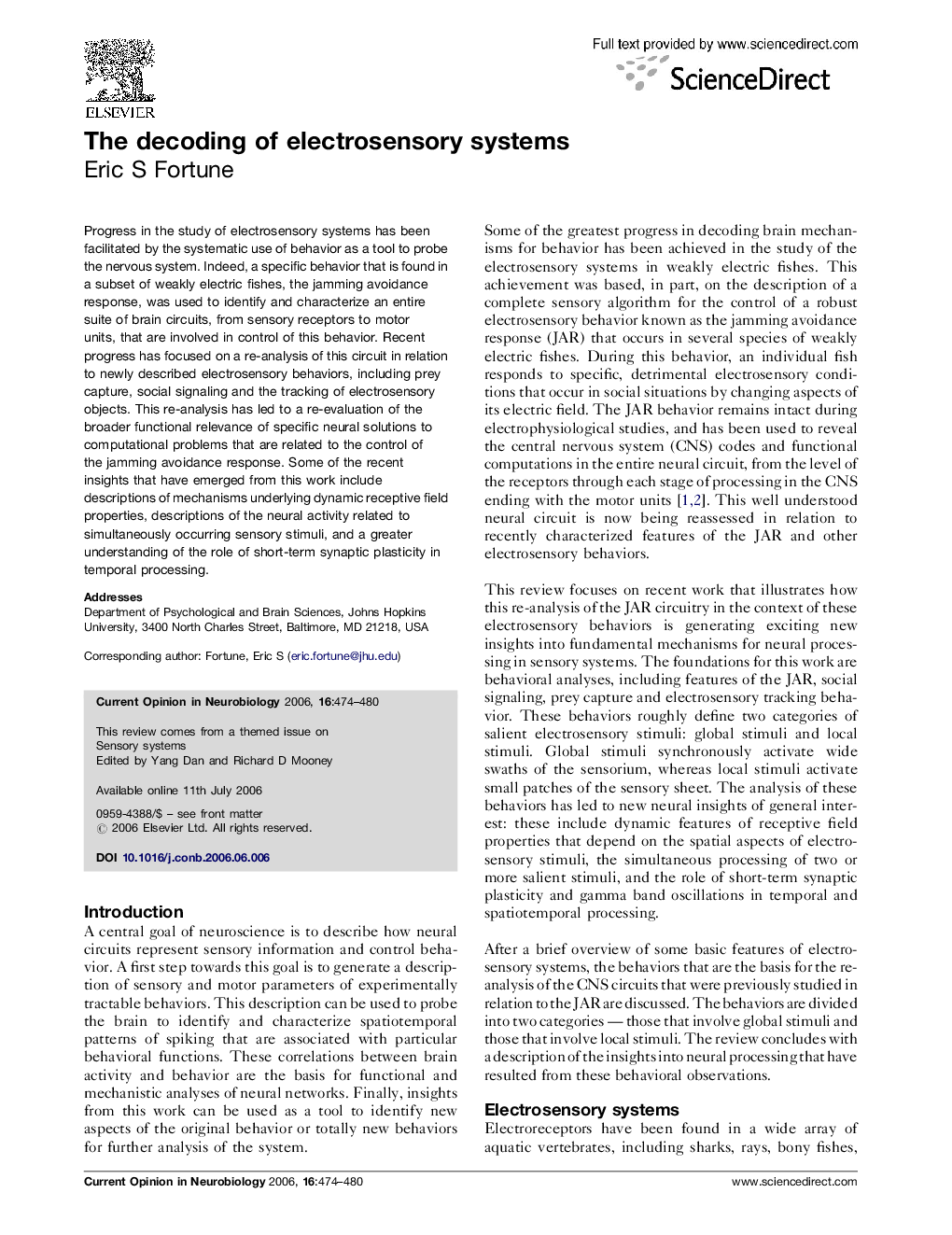| Article ID | Journal | Published Year | Pages | File Type |
|---|---|---|---|---|
| 4334474 | Current Opinion in Neurobiology | 2006 | 7 Pages |
Progress in the study of electrosensory systems has been facilitated by the systematic use of behavior as a tool to probe the nervous system. Indeed, a specific behavior that is found in a subset of weakly electric fishes, the jamming avoidance response, was used to identify and characterize an entire suite of brain circuits, from sensory receptors to motor units, that are involved in control of this behavior. Recent progress has focused on a re-analysis of this circuit in relation to newly described electrosensory behaviors, including prey capture, social signaling and the tracking of electrosensory objects. This re-analysis has led to a re-evaluation of the broader functional relevance of specific neural solutions to computational problems that are related to the control of the jamming avoidance response. Some of the recent insights that have emerged from this work include descriptions of mechanisms underlying dynamic receptive field properties, descriptions of the neural activity related to simultaneously occurring sensory stimuli, and a greater understanding of the role of short-term synaptic plasticity in temporal processing.
